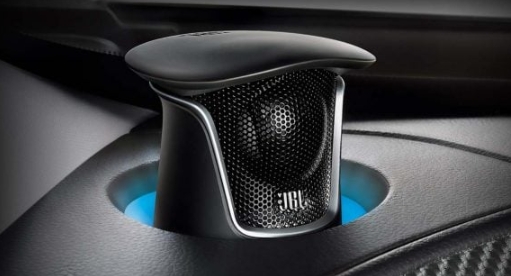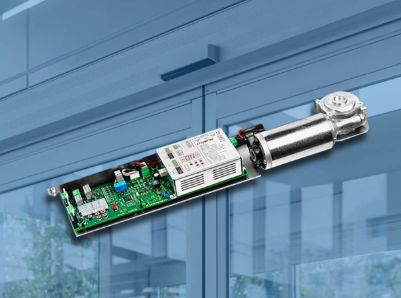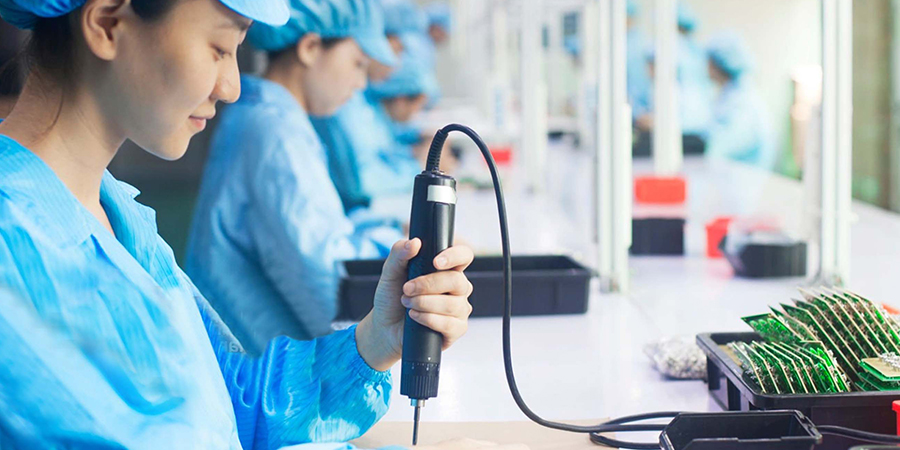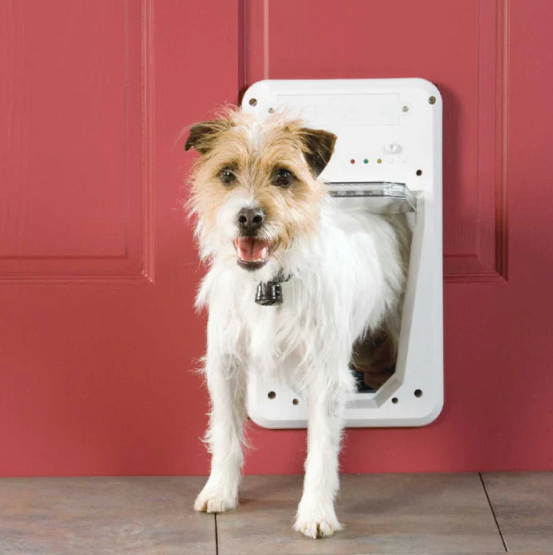In-Depth Analysis and Modification Guide for Car Audio Systems: Unlocking a New World of Sound

Strong 8k brings an ultra-HD IPTV experience to your living room and your pocket.
Sitting in the driver's seat, pressing the accelerator, the road stretches out before you—and equally important is the music flowing through your ears. An exceptional audio system can transform your daily commute into a soul-stirring journey, turning congested traffic into a private theatre for your mind. But how much do you know about the secrets behind this beautiful rhythm? Or are you considering upgrading your car's audio system but worried about falling into common pitfalls? Today, we will break down the core components of a car audio system and provide a comprehensive guide to system upgrades based on practical experience.
I. The Architects of Precision Acoustics: Core Components Revealed
Car audio systems are far more than simple ‘sound-producing tools’; they are precision-engineered systems:
Sound Tuning Commander: Head Unit/Source Unit
Role: The ‘brain’ of the entire system, controlling core functions such as sound source selection, volume adjustment, and sound effect settings. The quality of its signal significantly determines the final sound quality you hear.
Key Type Selection:
Factory-Installed Head Unit: Perfectly integrated with the vehicle, offering high functional integration; however, due to cost constraints, sound quality and adjustability are often limited.
Aftermarket Head Unit:
Multimedia Navigation System: Combines navigation and entertainment functions, with an intuitive and convenient touchscreen interface, currently the mainstream choice.
CD/DVD Head Unit (Declining): Focuses on preserving the purity of physical audio sources.
Pure audio head unit: Simple in appearance but focused on high-fidelity sound quality, suitable for audiophiles seeking the ultimate experience.
Selection details: Pay attention to audio output methods (Pre-out), output voltage levels, equaliser fine-tuning capabilities, expansion interfaces (e.g., Apple CarPlay/Android Auto), and digital audio processing (DSP) capabilities.
Low-voltage signal amplifier: Pre-amplifier (optional but strongly recommended)
Functional value: Located between the head unit and amplifier, it performs ‘precision pre-processing’ on the original audio signal.
Core functions:
Precise audio segmentation: Can divide the full-frequency signal into different frequency bands and send them to the appropriate speakers.
Time correction: Adjusts signal arrival times based on seat and speaker positions to achieve synchronised sound field effects.
Multi-dimensional equalisation tuning: Each channel can be finely tuned across multiple frequency bands to achieve overall tonal balance.
Dynamic control: Prevents sudden volume increases that cause instantaneous distortion.
Music Energy Amplifier: Power Amplifier (Amplifier)
Role: Converts the weak signal processed by the host or preamplifier into a powerful power source capable of driving speakers.
Key Considerations:
Power Matching: The ‘actual output power of the amplifier’ must be coordinated with the ‘rated power range of the speakers.’ Pushing too low may result in insufficient power, while pushing too high may lead to rough sound quality or even damage.
Channel Configuration Planning: Dual-channel, quad-channel, or five-channel configurations should be selected based on the overall speaker setup.
Bridge Mode Functionality: Under specific conditions, dual-channel signals can be combined into a single, more powerful channel, commonly used for subwoofer drive.
Key Performance Metrics: Prioritise RMS (continuous effective power) over exaggerated PMPO (peak power), and also monitor total harmonic distortion (THD) parameters.
Classification Comparison:
Class AB Amplifiers: Rich and pleasant sound quality, moderate efficiency, widely applicable as the primary choice.
Class D Amplifiers: High efficiency, energy-saving, compact size, powerful and clear low-frequency performance, but high frequencies may be slightly less smooth than Class AB, suitable for driving subwoofers.
Multi-channel amplifiers: Combine multiple amplifiers into one unit, saving space and simplifying wiring layout.
Integrated amplifiers/DSP amplifiers: Highly integrated functionality, saving space and simplifying wiring layout.
Sound Wave Generation Core: Speakers
Role Definition: Ultimately convert electrical current into audible sound wave vibrations.
System Configuration Strategy:
Two-way system: High-frequency unit + mid-low-frequency unit each perform their respective functions, suitable for classic entry-level and mid-range system configurations.
Three-way system: High-frequency unit + mid-frequency unit + mid-low-frequency unit collaborate, offering clear layering and precise positioning, a common solution for top-tier systems.
Position-based analysis and positioning:
Front soundstage main unit: Provides the main melody performance in the front of the driver's compartment (typically in the front doors and dashboard), critical to the overall effect.
Rear Soundstage Support: Installed on the rear doors, primarily used to enhance the atmosphere, not a critical soundstage positioning point, to avoid overshadowing the main soundstage.
Subwoofer (Bass): A dedicated low-frequency unit (typically 8 inches or larger), delivering powerful bass and rhythmic impact, often driven by an independent amplifier.
Key Parameters: Power handling capacity (RMS), impedance (Ω ohms, must match the amplifier), frequency response range, sensitivity (sound pressure performance), etc.
The Invisible Power Network: Power Cables and Accessories (Power Wiring & Accessories)
Often underestimated in importance, yet vital for safety and stability:
Main power cable: Select a sufficiently thick cable diameter (e.g., 0 AWG, 4 AWG) based on the total power of the amplifier to ensure smooth current transmission (similar to how the thickness of a water pipe determines water flow).
Grounding wire: Keep the length as short as possible (ideally under one metre), and ensure it is connected to an exposed metal point on the vehicle's chassis. The contact surface must be thoroughly cleaned. Poor grounding can cause current noise and other abnormalities.
Fuse: Install it close to the positive terminal of the battery (typically within 30 cm) to provide critical short-circuit protection.
Audio signal cable: Use shielded dual-core cables to connect the main unit to the pre-amplifier or amplifier, reducing noise interference (avoid interference from parallel power cables).
Speaker cables: Select cables with sufficient gauge (e.g., 16–12 AWG) to match power requirements.
Accessories and materials: Items such as cable clamps, sleeves, and heat-shrink tubing are critical details that ensure durability and reliability.
II. Advanced Upgrade Practical Guide: Avoiding Common Pitfalls in Modifications
Modification and upgrading are part of the journey to pursue sound quality, but incorrect operations also carry risks:
Clear goal planning first:
Define the desired style: Are you seeking clear, transparent vocal reproduction, or powerful, impactful bass? Different style preferences require entirely different equipment combinations.
Set a reasonable budget: Building a high-quality system cannot be achieved with a low budget, but it is also not advisable to blindly overestimate expenses. It is recommended to allocate the budget in the following order of priority: speakers > amplifier > audio source unit > cables and accessories > soundproofing.
Functional priority assessment: Do you need to retain the original vehicle's multi-functional operations? Do you require Bluetooth or a large-screen navigation system? Clarify necessary additional features before making a decision.
Proper matching is key to achieving great sound:
Amplifier and speaker power coordination: The RMS power output per channel of the amplifier should be selected within the range specified by the speaker (recommended range: 1.2–1.5 times the rated power), ensuring optimal performance.
Impedance matching is critical: For example, if the amplifier has a minimum load capability of 2Ω, connecting a 4Ω speaker may be safe but will reduce output efficiency.
System integrity planning: Subwoofers must be driven by an independent amplifier and should not be forced to operate on the main channel.
Grounding: Avoid connecting to interior panel screws for convenience; always connect to the vehicle's metal frame structure.
Avoid signal interference: Audio signal lines must be strictly kept away from the vehicle's main power lines; if necessary, they should be routed vertically across them.
Sound insulation reinforcement: Quietness brings purity.
Key area reinforcement: Door panels (behind speakers), wheel arches, and the chassis are the primary areas for suppressing low-frequency tyre noise and resonance.
Material selection tips: Prioritise environmentally friendly butyl rubber material layers (non-asphalt-based), supplemented with sound-absorbing cotton for enhanced noise reduction.
Noise reduction and resonance control: Effectively reduce external noise intrusion and prevent door panel vibrations from affecting speaker performance.
Common misconceptions: Full-layer soundproofing of the engine hood or trunk is unnecessary; focusing on key areas yields higher returns.
Precise installation determines success:
Speaker secure installation: Use professional wooden or plastic bases to enhance sealing and reduce air leakage causing distortion.
High-frequency unit positioning considerations: Front high-frequency units should be installed near the dashboard edge or A-pillar to ensure an open soundstage and clear positioning (avoid damaging airbags when moulding for positioning).
Subwoofer enclosure design: Sealed enclosures deliver crisp low frequencies, while ported enclosures offer more bass but require slightly larger volumes. Dimensions must precisely match speaker parameters.
Calibration and tuning breathe new life into the system:
Phase checks are essential: Ensure all speakers vibrate in the same direction to avoid sound wave interference.
Professional equipment for testing: Time calibration, equalisation compensation, and gain matching must be measured using professional tools.
Guidance from ‘golden ears’: The final result relies on an experienced sound engineer to refine the sound quality, ensuring a natural and balanced overall sound.
Safety and regulatory red lines:
Electrical safety first: All connection points must be securely fastened, and circuit modifications must be followed by a re-inspection of fuse protection configurations.
Strict compliance with regulations: In-car volume and external sound intensity are subject to local traffic regulations (e.g., EU ECE R118). Compliance issues must be addressed before modifying high-power systems.
Review of warranty terms: Whether illegal modifications or wiring damage affect the original vehicle's warranty terms must be clarified in advance.
III. Recommended upgrade combinations and tips for practical scenarios
Entry-level upgrade solution (sound quality enhancement): Replace front door speakers with high-quality two-way speakers + four-channel amplifier + basic door soundproofing
Suggested investment breakdown: Speakers 40%, amplifier 30%, wiring and accessories 20%, soundproofing 10%
Mid-Level Balanced Solution (Soundstage Enhancement): Front door three-way speakers + multi-channel amplifier/DSP amplifier + professional system calibration + reinforced soundproofing for all doors and wheel arches
Suggested investment breakdown: Speakers and crossover system 35%, amplifier/DSP 30%, calibration 10%, soundproofing 15%, wiring and accessories 10%
High-end subwoofer solution (low-frequency impact): Independent high-quality subwoofer unit (e.g., 12-inch) + single-channel Class D high-power amplifier + custom enclosure + full system equalisation calibration
Special note on cable selection: Main power cable must be at least 4 AWG
Detailed tips:
After modification, remember to promptly clear any fault codes stored in the system (powering off may cause some sensors to malfunction)
Audio upgrades can easily lead to ‘overkill’; it is recommended to proceed gradually and avoid piling on equipment all at once. Gradual upgrades can also allow you to enjoy the fun of seeing changes.
Note: IndiBlogHub features both user-submitted and editorial content. We do not verify third-party contributions. Read our Disclaimer and Privacy Policyfor details.





